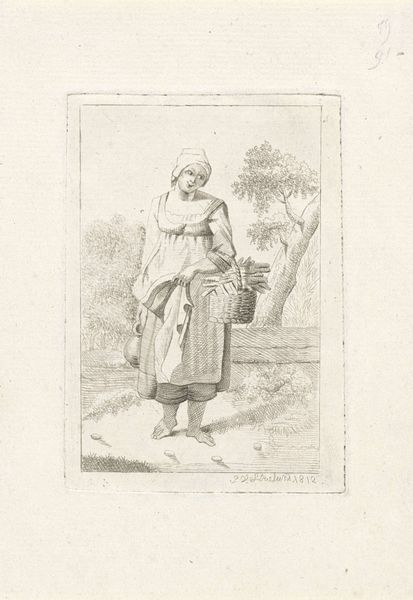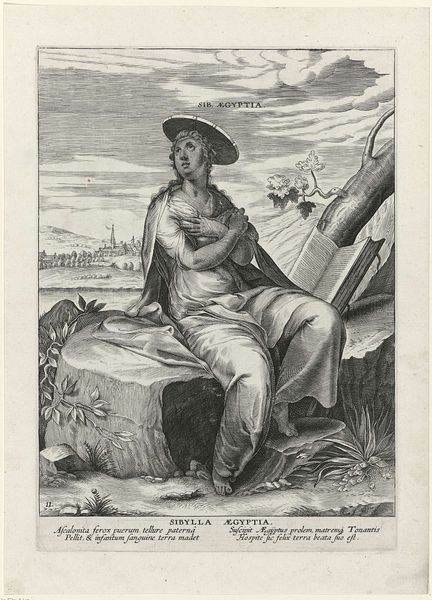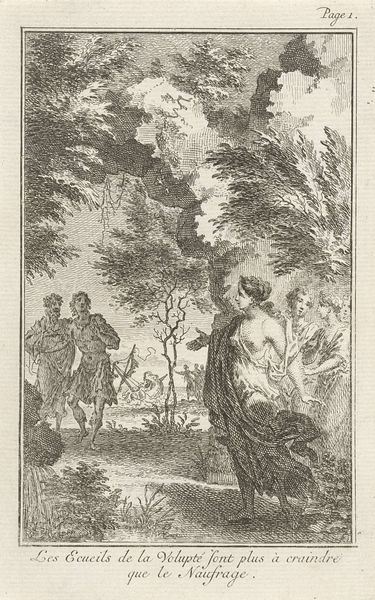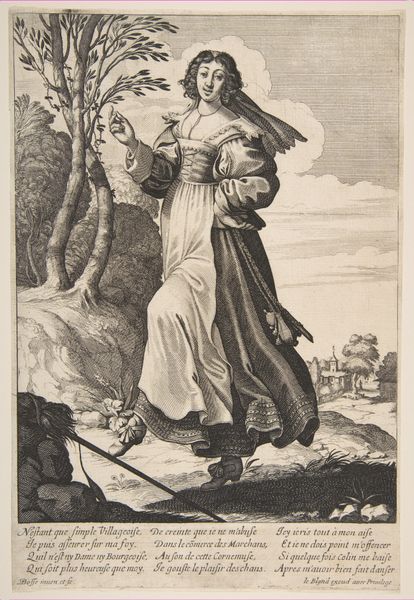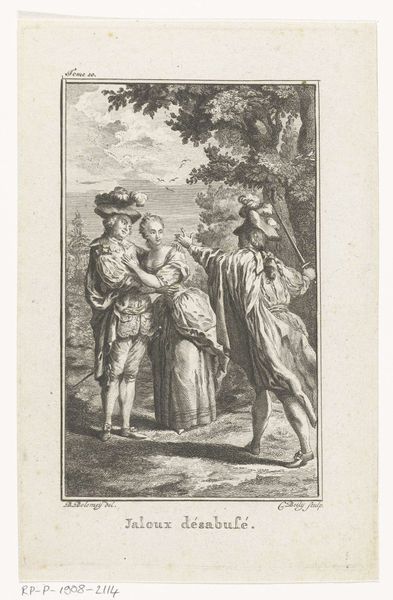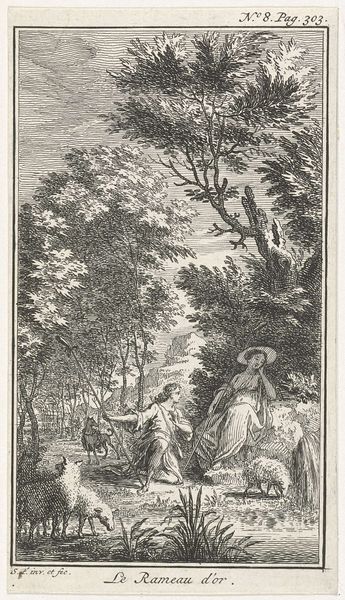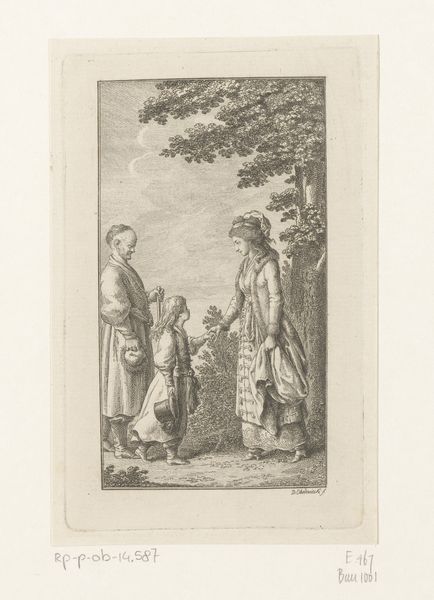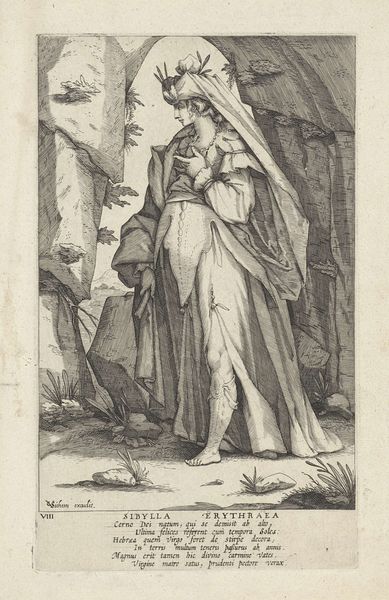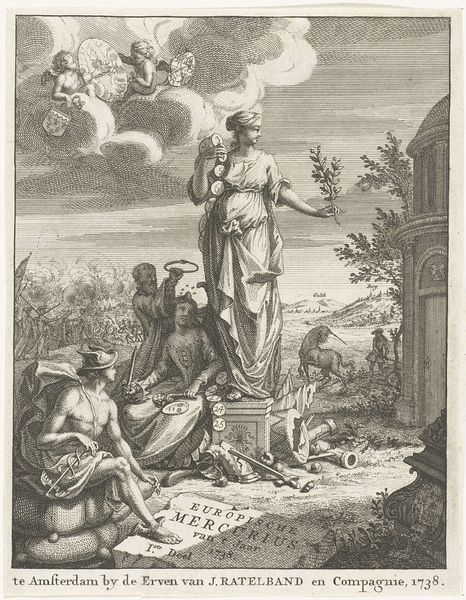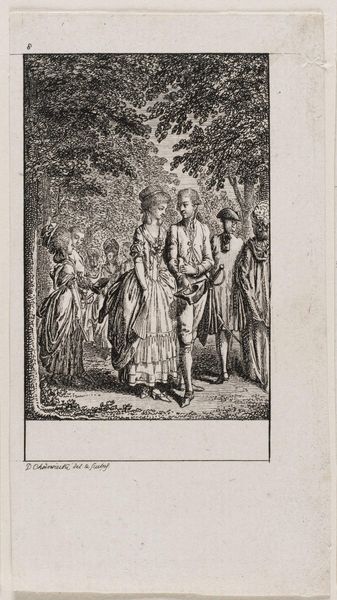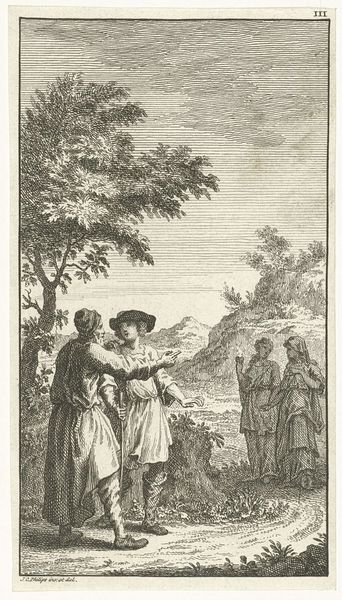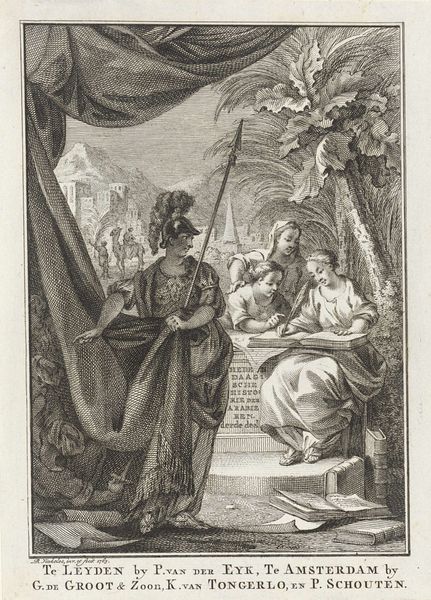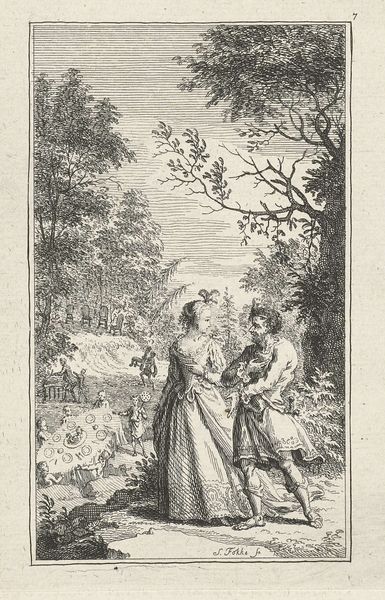
print, engraving
#
neoclacissism
#
allegory
# print
#
old engraving style
#
landscape
#
figuration
#
line
#
history-painting
#
engraving
Dimensions: height 130 mm, width 82 mm
Copyright: Rijks Museum: Open Domain
Curator: Charles Boily's engraving, "De Oranjeboom behoedt de kunst," which roughly translates to "The Orange Tree Protects the Arts," likely created sometime between 1753 and 1813, presents an allegorical scene rendered with meticulous detail. Editor: The mood, for me, feels deliberately optimistic, wouldn’t you agree? Despite being a print, a medium known for its reproducibility, there’s an airy, almost fragile quality. Curator: Indeed. Note the Neoclassical elements – the idealized figure, the draping fabrics. We have a symbolic tableau where each component serves a distinct purpose within the larger narrative framework. Editor: It reminds me of those old theatre backdrops; grand gestures hinting at something bigger. The way the woman holds that mask seems laden with meanings; I can almost feel her anxieties regarding how the artwork will be received. Curator: I see your point about performativity, though perhaps you’re verging into speculation! From a structural standpoint, the central female figure stands confidently, directing our gaze towards both the tools of art and, crucially, the protective orange tree, which probably stands for the House of Orange, alluding to patronage and safeguarding. Editor: Well, isn’t that the point of art? To conjure up narratives? I appreciate how it suggests creativity thrives only with protection and endorsement from political establishment, symbolized here by the orange tree motif – which might also reflect an insecurity regarding sustainability. The cupid-like figure writing below confirms this idea of patronage, as well. Curator: Perhaps, yet the clear, crisp lines of the engraving, almost architectural in their precision, counteract such emotive subjectivity. It signifies a desire for rational order during turbulent times of artistic evolution. Boily manages this through deployment of line and the construction of figurative elements. Editor: Sure, but art also lives outside rigid theory; maybe Boily hid personal reflections inside those precise engravings. In a way it is all rather humorous how an artwork created ages ago can provoke such reflections to begin with. Curator: Well said. Considering the historical setting in mind, “De Oranjeboom behoedt de kunst” succeeds in allegorically representing the dependency of the arts on powerful protectors with remarkable economy of line. Editor: Absolutely. What begins as simple appreciation of imagery spirals into something richer – it turns into, ironically, safeguarding not just arts but thought itself.
Comments
No comments
Be the first to comment and join the conversation on the ultimate creative platform.
